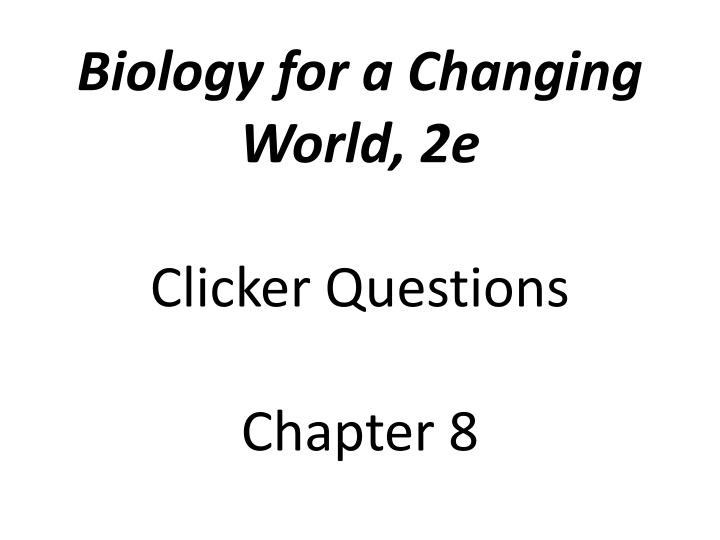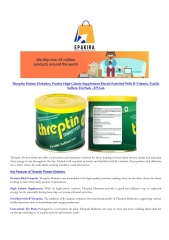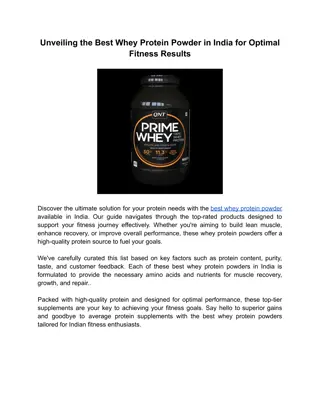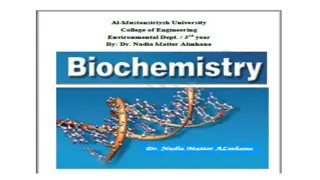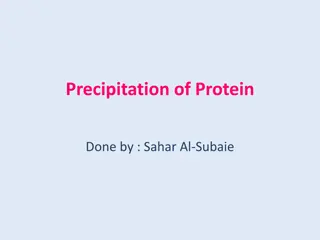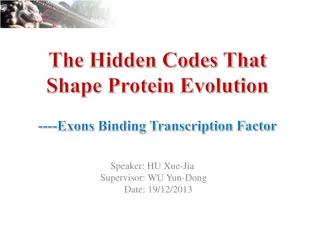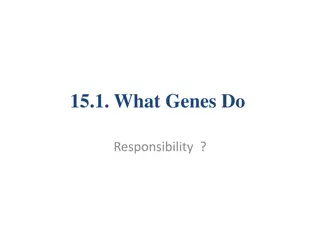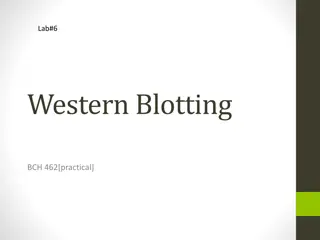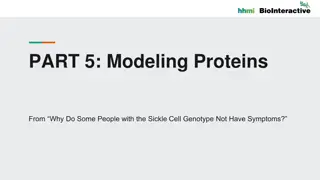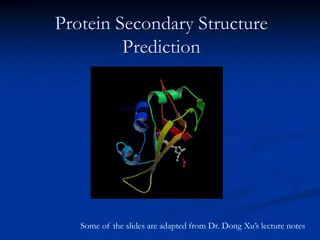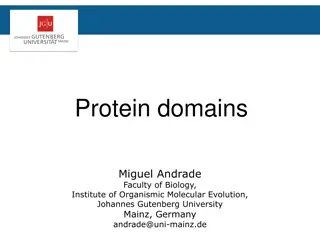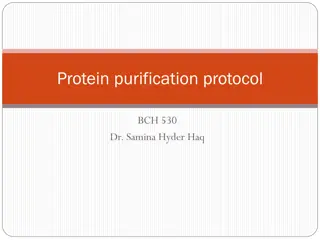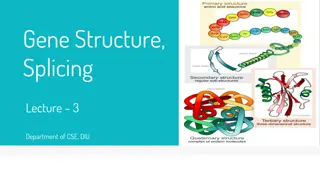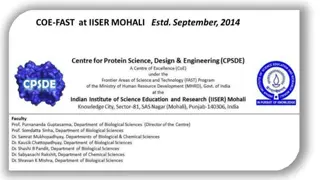Protein Structure and Function Overview
Explore key concepts related to proteins, amino acids, DNA mutations, and protein synthesis through interactive clicker questions. Understand the impacts of mutations, heat, and cellular processes on protein structure and function.
Download Presentation

Please find below an Image/Link to download the presentation.
The content on the website is provided AS IS for your information and personal use only. It may not be sold, licensed, or shared on other websites without obtaining consent from the author.If you encounter any issues during the download, it is possible that the publisher has removed the file from their server.
You are allowed to download the files provided on this website for personal or commercial use, subject to the condition that they are used lawfully. All files are the property of their respective owners.
The content on the website is provided AS IS for your information and personal use only. It may not be sold, licensed, or shared on other websites without obtaining consent from the author.
E N D
Presentation Transcript
Biology for a Changing World, 2e Clicker Questions Chapter 8
Which of the following is true of proteins? A. There are 20 proteins in humans. B. Proteins are made of building blocks called monosaccharides. C. Proteins are only produced by multicellular organisms. D. Proteins are produced in the cell s nucleus. E. None of the above.
Amino acids are used to produce ____. A. fats B. proteins C. monosaccharides D. DNA E. both C and D
If two proteins differ in one amino acid, which of the following would be true? A. The proteins may not have the same 3-D shape. B. The proteins may not have the same function. C. The two proteins would be produced by different DNA sequences. D. The two proteins would be produced in the same location within a cell. E. All of the above.
How does a mutation in DNA affect the shape of a protein? A. DNA is a protein. B. DNA codes for the sequence of amino acids in a protein. C. DNA forms bonds between amino acids. D. Mutations in DNA change the binding sites where amino acids attach to DNA. E. B, C, and D are correct.
What effect does heat have on a protein? A. Heat denatures proteins. B. Heat changes the 3-D shape of proteins. C. Heat changes the function of proteins. D. All of the above. E. B and C only.
When a cell makes proteins starting from a DNA template, which of the following processes must occur? A. DNA replication B. transcription C. translation D. Both A and C are correct. E. Both B and C are correct.
A gene is___________________. A. a protein that expresses other proteins B. the sum total of all the DNA in an organism C. a section of DNA necessary to express one protein D. produced in the cell s nucleus when gene expression is turned on E. the same thing as an mRNA
________ is the process of making messenger RNA (mRNA), whereas ______ is the process of making proteins. A. Translation; protein replication B. Transcription; translation C. RNA replication; transcription D. Cell division; ribosome E. None of the above.
What does it mean when someone says that a gene is being expressed in a cell? A. A protein is encoded by the DNA of the cell. B. The gene works faster. C. The gene is being used to produce a protein within the cell. D. The gene is located within that cell. E. None of the above.
People who have an inherited deficiency in antithrombin may have __________. A. inherited a defective copy of the antithrombin gene from their mother. B. inherited a defective copy of the antithrombin gene from their father. C. inherited defective copies of the antithrombin gene from both parents. D. Any of the above. E. Only A or C.
If a mutation occurs in a regulatory sequence which of the following must be true? A. The protein produced will change. B. The DNA sequence will change. C. The protein will be produced at a slower rate. D. The protein will be produced at a faster rate. E. The organism will have an inherited disease.
What is the main difference between the genetic code used by human beings and the genetic code used by goats? A. In goat DNA the nucleotide A base-pairs with T. B. Goat DNA contains more alleles. C. Humans have tRNAs, whereas goats do not. D. The codons that encode for leucine are different for goats. E. The genetic code is the same for goats and humans.
In transgenic goats which cells would be expected to have the coding sequence for the antithrombin gene? A. mammary and red bone marrow cells B. mammary cells only C. mammary and liver cells D. red bone marrow cells E. all body cells
Which of the following is a true statement regarding antithrombin production in a transgenic goat? A. Antithrombin is produced at low levels in all body cells. B. Antithrombin is only produced when the appropriate regulatory sequence is present. C. The recombinant antithrombin gene replaces a gene that is only expressed in mammary glands. D. The recombinant gene only speeds up the rate at which goats produce antithrombin. E. Both A and B.
Which of the following makes it possible for humans to create genetically modified organisms? A. There is a universal genetic code. B. Humans are more intelligent than other organisms. C. It is possible to make organisms that normally use RNA to code for amino acids switch to using human DNA. D. All organisms produce all of the exact same proteins. E. Both A and D.
A deficiency of functional antithrombin increases the risk of A. stroke. B. abnormal clotting. C. heart attack. D. kidney disease. E. A, B, and C are correct.
People with Type 1 diabetes mellitus do not produce insulin in their pancreas. Which of the following would be the most efficient way to provide replacement insulin for Type 1 diabetics? A. Insert the coding sequence for insulin into healthy people. B. Create genetically modified mice that express the insulin gene in their saliva. C. Extract insulin from human blood donors. D. Create genetically modified cows who express the insulin gene in their mammary glands. E. C and D are equally efficient.
Which of the following is NOT a benefit of using genetically modified organisms to produce drugs compared to human blood donors? A. There is a lower risk of disease. B. Proteins from GMOs are identical to human proteins. C. GMOs can produce massive amounts of proteins in a short period of time. D. GMOs provide a steady supply of proteins. E. All of the above make GMOs a better choice.
Why would someone want to produce antithrombin in a goat? A. Genetically modified goats can produce a more stable supply than human blood donors. B. The risk of infectious disease is lower from a goat than from a human blood donor. C. Goat antithrombin is better than human antithrombin. D. Both A and B are correct. E. Both B and C are correct.
